Memories of Women Live on in Kushi Kanzashi Museum
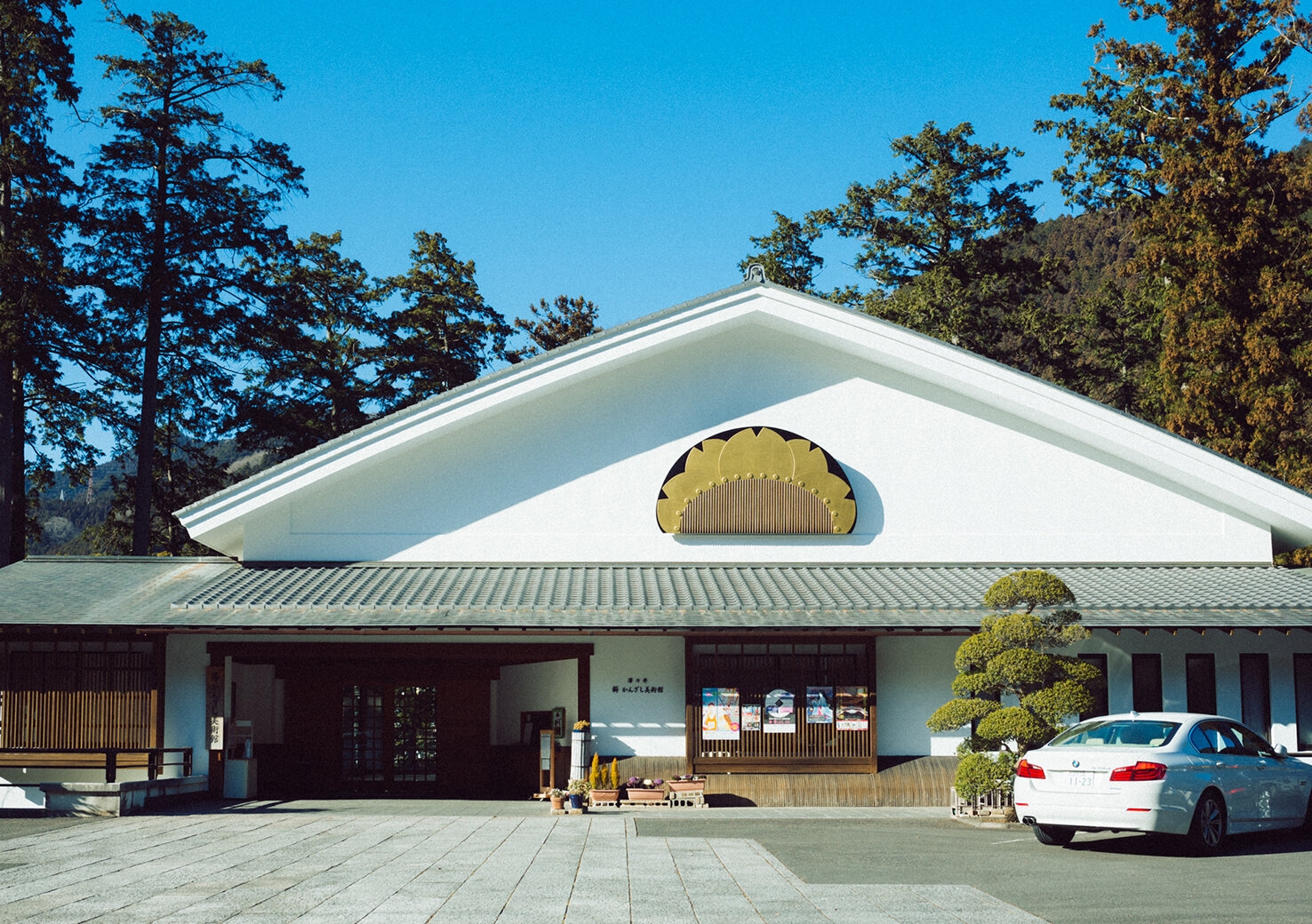
Kushi Kanzashi Museum is located on the bank of the upper Tamagawa River, which flows along the prefectural border of Tokyo and Kanagawa. Within the lush greenery of Ome City, where little birds can be heard chirping, stands Japan's only museum specializing in kushi (combs) and kanzashi (hairpins). Especially around the Edo Period (1603-1868) , kanzashi were popular hair ornaments among women who wore nihongami[1]. Collector Chiyo Okazaki's accumulation of 3,000 kushi and kanzashi is showcased in this scenic museum. Its slightly curved roof is said to express the softness of women.
[1]Nihongami is a collective term for the traditional Japanese way of tying hair up in voluminous shapes, which became popular among women between the Edo Period and the early half of the Showa Period (1926-1989).
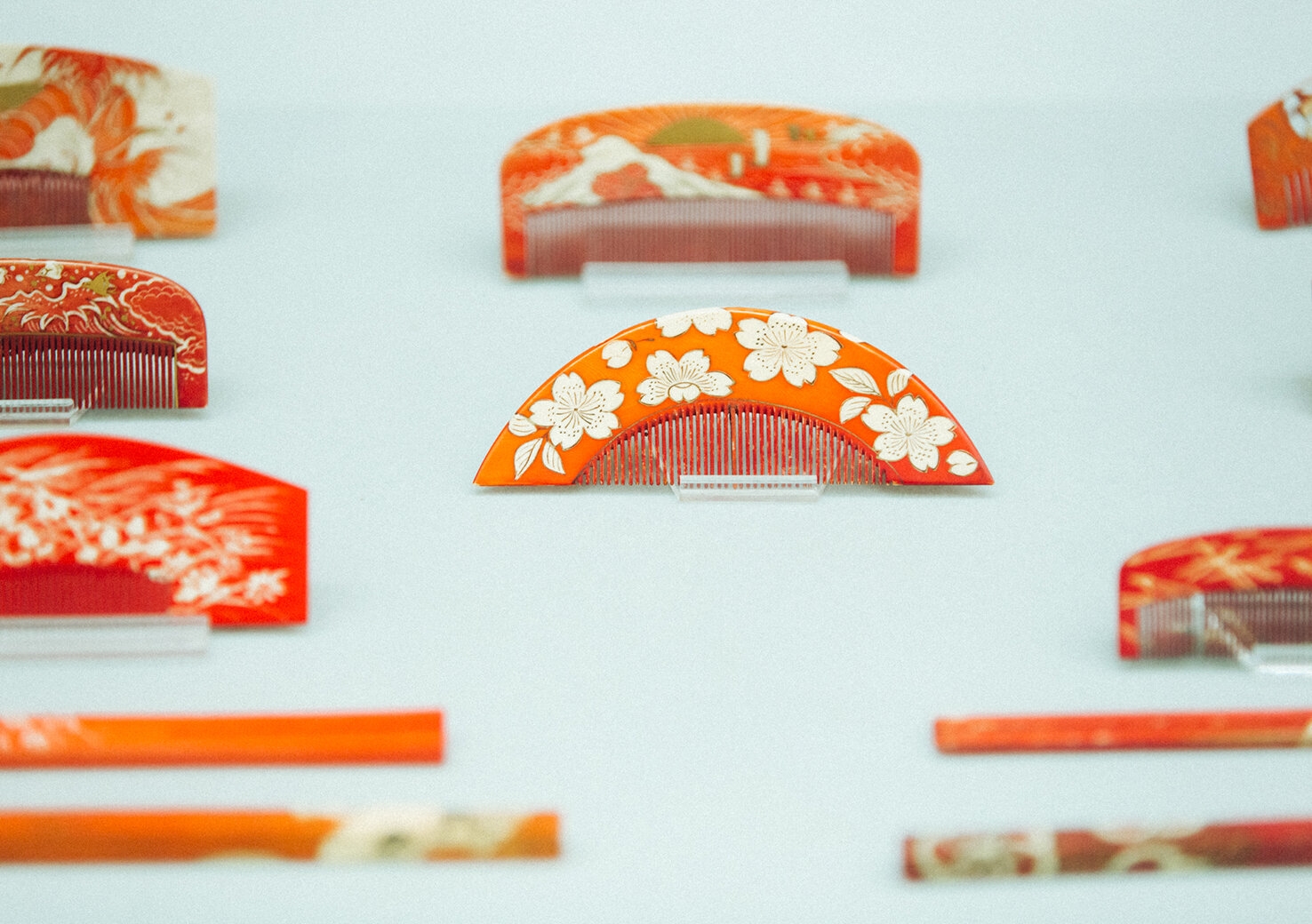
Long ago, ordinary women left down their long hair but, in the first half of the Edo Period, it became customary for them to tie it up in the style of nihongami so they could move more freely. This practice continued and women wore nihongami on a daily basis until the first half of the Showa Period (1926-1989). Kanzashi were created as hair accessories for nihongami-wearing women in samurai families in the early Edo Period. In the latter half of the Edo Period, kanzashi use spread to merchant families and then became popular among the general public. Each aspect of a kanzashi--its color, material, decoration, and shape--expresses the style of fashion-conscious women of that time.
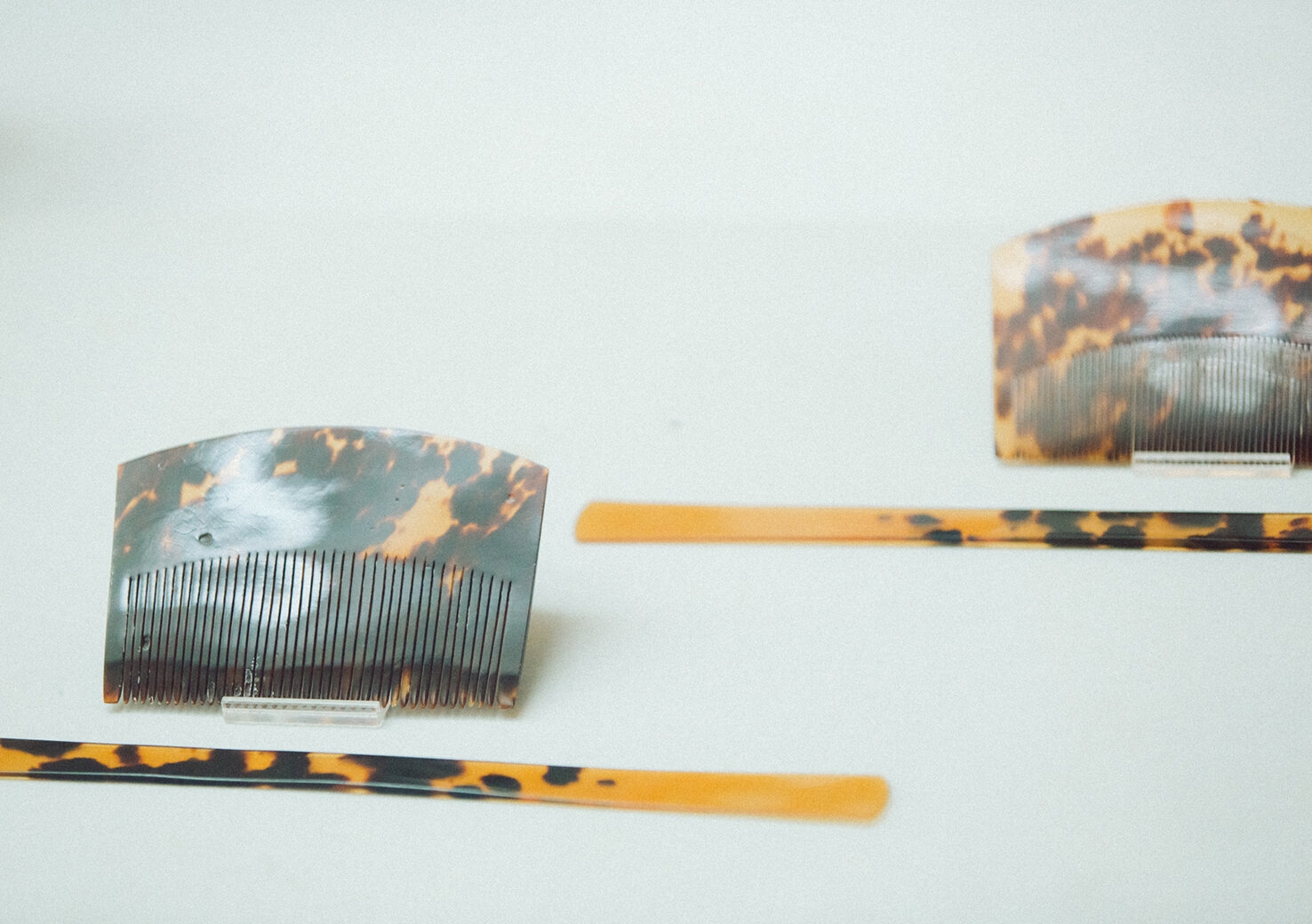
The oldest piece displayed in the museum is a kushi and a kogai (hair stick) made of tortoise shell. Because nihongami was considered a casual hairdo, women had to let their hair down before going out in public. By pulling out the hair stick, they could let down their long hair easily.
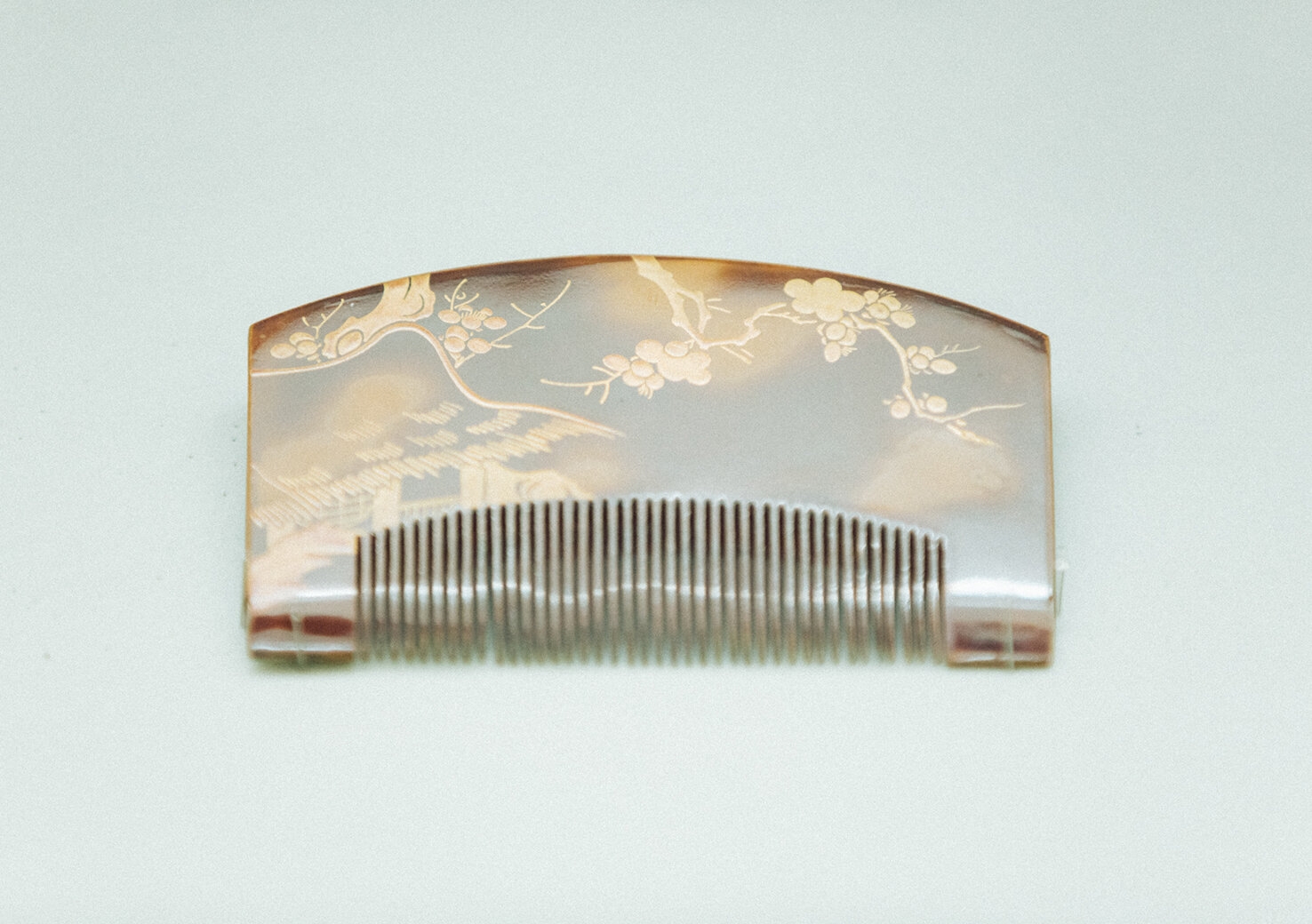
During the early Edo Period, both ends of kushi were short but they became wider towards the latter half of the period. The comb's shape also changed from square to rectangle. Because the size of nihongami bunches at the top, sides and back of the head gradually shrunk by the Meiji Period (1868-1912), kushi from this time are smaller than those before. Since the exhibited pieces are displayed chronologically, visitors can see the change in shape according to trends and desired functions.

A distinct feature of the kanzashi pictured above is their ear-pick functionality. Because common people were prohibited from buying luxury items in the Edo Period, they were not allowed to decorate their head with kanzashi. Thus, an ear pick was incorporated on the tip so women could claim that it was a practical item.
Small kushi and kanzashi dating from the end of the Edo Period to the Meiji Period were finely and intricately handmade by skilled craftsmen. However, as a result of the mechanization and technical development in the Taisho Period (1912-1926), kushi and kanzashi made in the following Showa Period were large and flashy. As many of them were made from celluloid, which cannot be used today, they exude a certain glamor that those from the Edo Period do not.
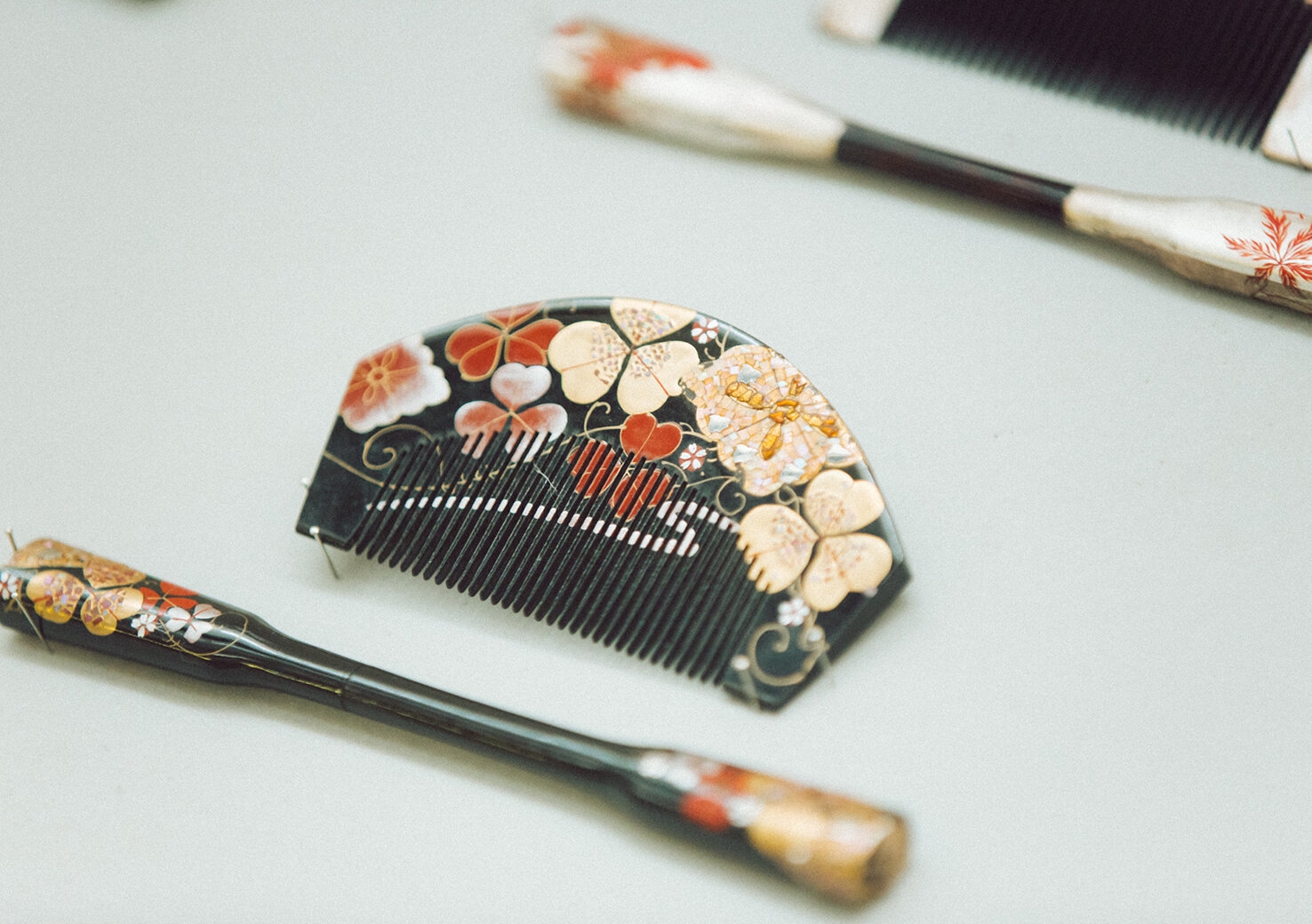
Each season is reflected in the designs and materials used for kushi and kanzashi in the Edo Period--plum and cherry blossom in spring; glass and crystals in summer; red leaves in fall; and camellia in winter. However, these seasonal varieties gradually became less common and were eventually outnumbered by pieces that could be used year round. The culture of kushi and kanzashi ebbed away as the practice of wearing nihongami declined.
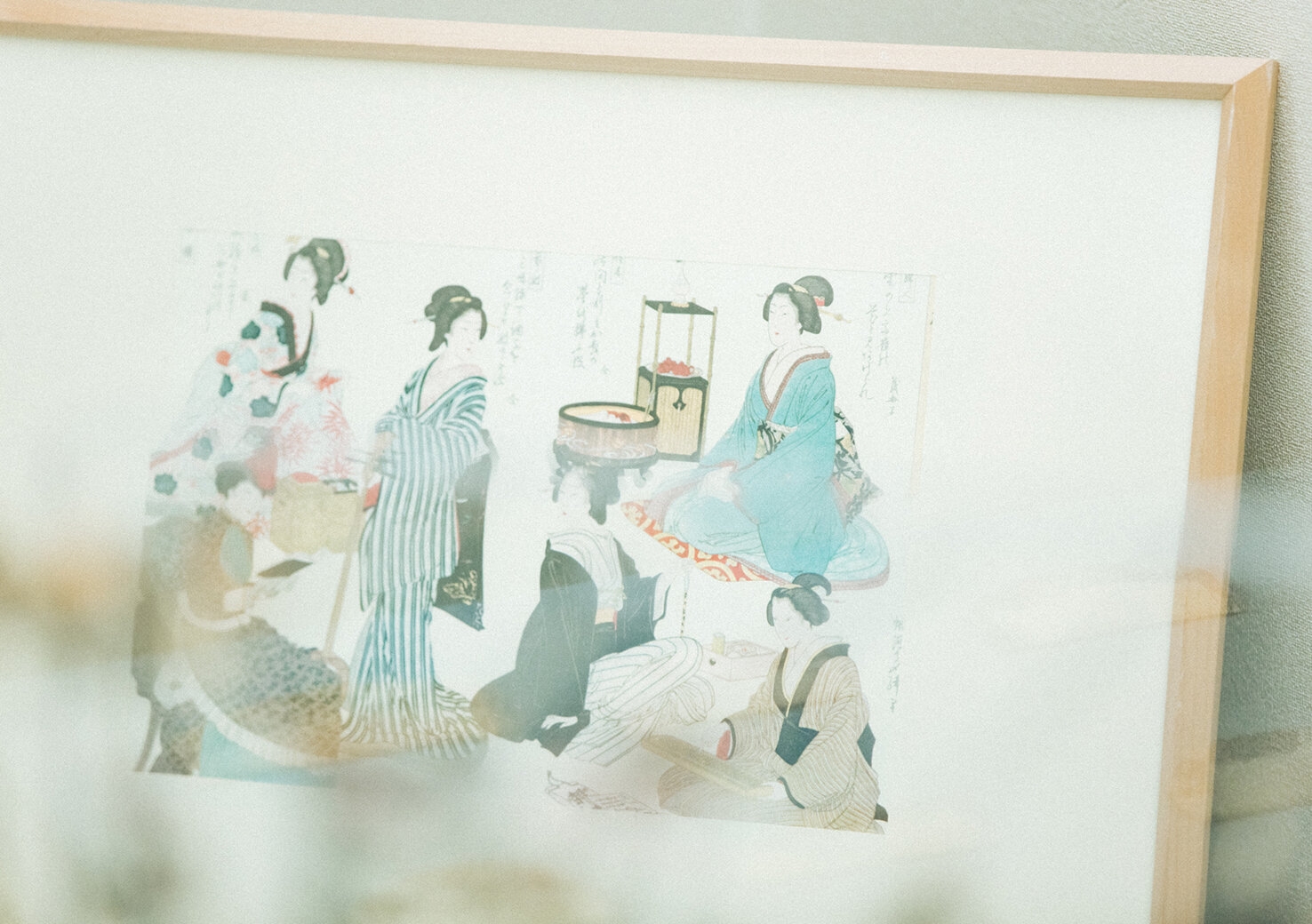
Once a daily necessity for decorating hair, kushi and kanzashi added color to women's lives. These items gradually became objects of art, reflecting how our everyday appreciation of aesthetic beauty was lost over time. Each kushi and kanzashi has a hidden story of its own: a gift from someone special, an item for beauty competitions, or a treasure obtained after a hardship. To imagine the life of vibrant Edo city by viewing kushi and kanzashi once worn by the women who lived there is no doubt a luxury and privilege.
Kushi Kanzashi Museum
Address: 3-764-1 Yugi-machi, Ome-shi
Phone number: 0428-77-7051
Open: 10:00-17:00
Closed: Mondays (closed on Tuesday if Monday is a public holiday), New Year, and other dates
Entrance fee: ¥600 (¥500), students above elementary level ¥500 (¥400), elementary students ¥300 (¥200)
Discounted fee for groups of 20 or more in brackets.
Website: www.kushikanzashi.jp
*This article was posted on the Life in Tokyo website operated by the Tokyo International Communication Committee on September 11, 2017.
